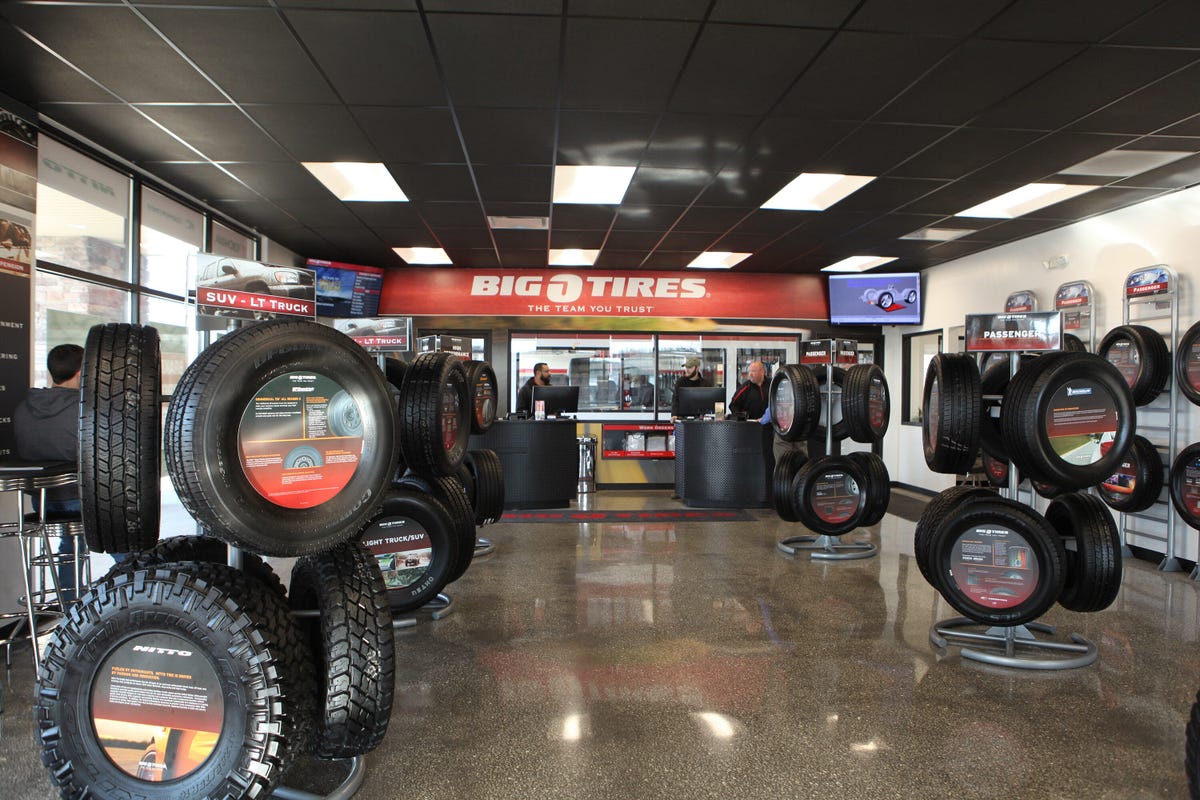Tire Substitute: The Art of Picking the Right Tire Size
Picking the ideal tire size is a critical aspect of preserving ideal performance and safety for your automobile. From recognizing just how tire dimension specs are identified to acknowledging the results of wrong dimensions on your lorry's handling and performance, the journey to locating the excellent tire dimension is a nuanced one.
Significance of Correct Tire Size
Picking the ideal tire dimension is important for making sure ideal efficiency, security, and effectiveness of your car. One of the vital reasons why tire size issues is due to the fact that it influences the general handling of your automobile. In terms of security, having the appropriate tire size makes sure that your car can successfully hold the road, brake successfully, and maneuver smoothly to prevent accidents.
Elements Affecting Tire Dimension Option
A necessary consideration in establishing the suitable tire dimension for your car is recognizing the various factors that influence this option. Deviating from the advised tire size can impact the speedometer precision, fuel performance, and overall efficiency of the lorry.
If you regularly drive off-road or in challenging weather condition conditions, you may need a tire with a different size or tread pattern compared to someone who mainly drives on highways. The surface you drive on also plays a role in identifying the excellent tire dimension.
Additionally, the size of your wheels can limit the options for tire sizes. It's vital to guarantee that the tires you select are compatible with your wheels to avoid any type of safety hazards or efficiency concerns. By meticulously taking into consideration these variables, you can select the best tire size that ideal matches your driving requirements and car requirements.
Understanding Tire Dimension Requirements

In addition, tire size requirements may include lots index and speed score. The lots index indicates the optimum weight a tire can sustain, while the speed ranking represents the optimal rate capability of the tire. By recognizing these specifications, you can guarantee that the tires you choose work with your automobile's requirements and provide optimum performance and security when driving.

Impacts of Incorrect Tire Dimension
Using the incorrect tire dimension for your vehicle can have damaging results on its efficiency and safety and security. When a tire size is inaccurate, it can lead to issues such as bad handling, endangered stopping capabilities, and enhanced danger of crashes. Tires that are also small may lead to minimized security, particularly during high-speed maneuvers, while oversized tires can trigger scrubing versus the lorry's body parts, leading to potential damage.
Incorrect tire sizes can likewise affect fuel effectiveness. Using tires that are not fit for your automobile can modify the speedometer analysis, causing inaccurate mileage computations. Moreover, mismatched tire sizes can put additional pressure on the engine and transmission, potentially decreasing the overall gas economic situation of the lorry - tire shop morris.
In addition, wrong tire sizes can affect the general convenience of the experience. Improperly sized tires may cause boosted roadway noise, vibrations, and a harsher driving experience. To keep optimum performance, safety, and convenience, it is essential to make sure that the tire size matches the specs recommended by the lorry manufacturer.
Tips for Picking the Right Tire Size
Selecting the ideal tire dimension for your vehicle is essential for guaranteeing optimum efficiency and safety when driving. To assist in picking the ideal tire size, take into consideration the complying with suggestions. Always refer to your car producer's referrals. These specifications are very carefully selected to offer the very best balance of handling, grip, and convenience for your specific lorry model. Variable in the normal driving conditions you come across. If you often drive in snowy or icy problems, a tire with a different dimension or tread pattern might be needed to make certain adequate grasp. In addition, consider your driving routines and preferences. Selecting a tire dimension that matches your motoring design can enhance your overall driving experience if you prioritize a smooth and peaceful adventure. Lastly, speak with a specialist tire service technician. They can give skilled suggestions based upon your lorry, driving demands, and local weather conditions to help you make an informed decision. By adhering to these pointers, you can select the right tire size to maximize your lorry's performance and security.
Final Thought
In final thought, choosing the proper tire size is crucial for ensuring ideal performance and safety of a car. Aspects such as car type, driving problems, and manufacturer recommendations have to be thought my website about when choosing the appropriate tire size. Wrong tire size can lead to unfavorable effects on handling, gas effectiveness, and total security. By understanding tire dimension specs and following ideas for selection, drivers can make enlightened decisions to improve their driving experience.
From recognizing how tire dimension specifications are figured out Going Here to identifying the effects of inaccurate dimensions on your vehicle's handling and effectiveness, the journey to locating the ideal tire dimension is a nuanced one.Tire dimension requirements offer vital information concerning the measurements and features of a tire. The tire dimension is generally shown on the sidewall of the tire and is stood for by a mix of numbers and letters. In this example, "P" signifies the tire kind, "215" stands for the tire size in millimeters, "65" is the facet proportion (the proportion of the tire's elevation to its width), and "15" suggests the size of the wheel in inches that the tire is developed to fit.
Tires that are as well tiny may result in minimized stability, especially throughout high-speed maneuvers, while oversized tires can cause rubbing top article against the vehicle's body components, leading to potential damages.